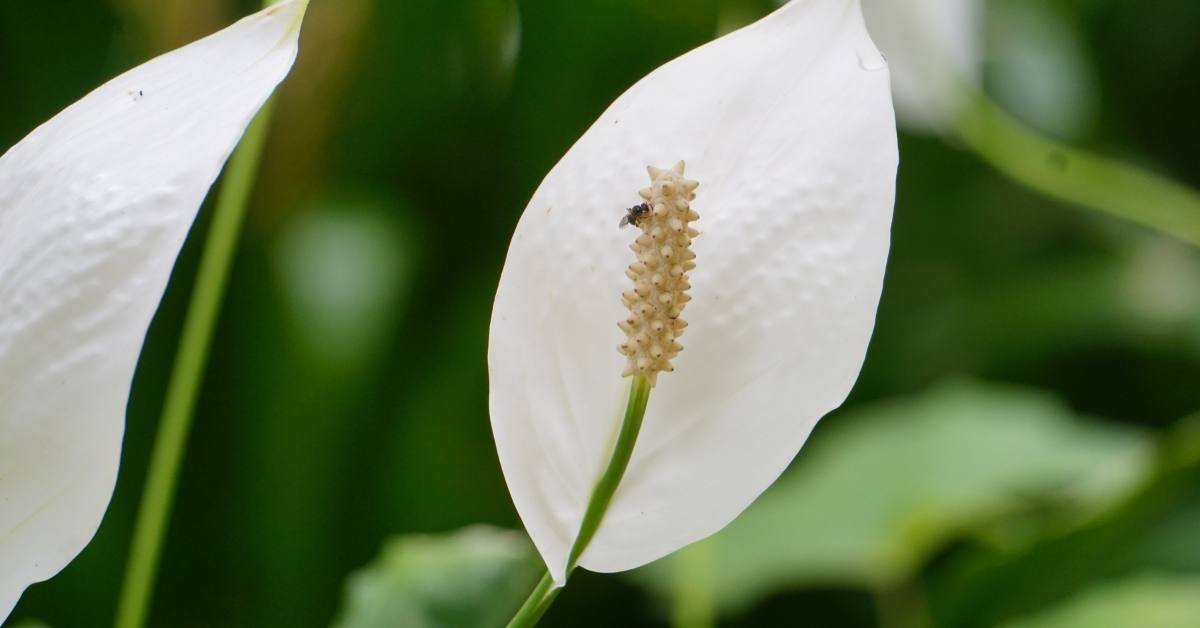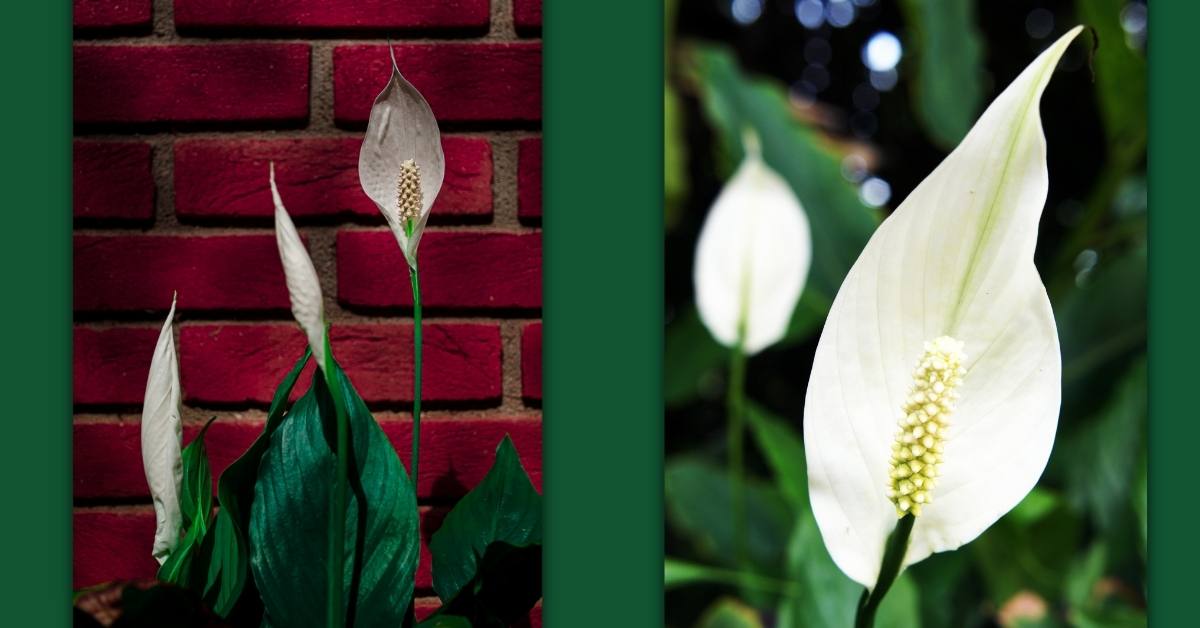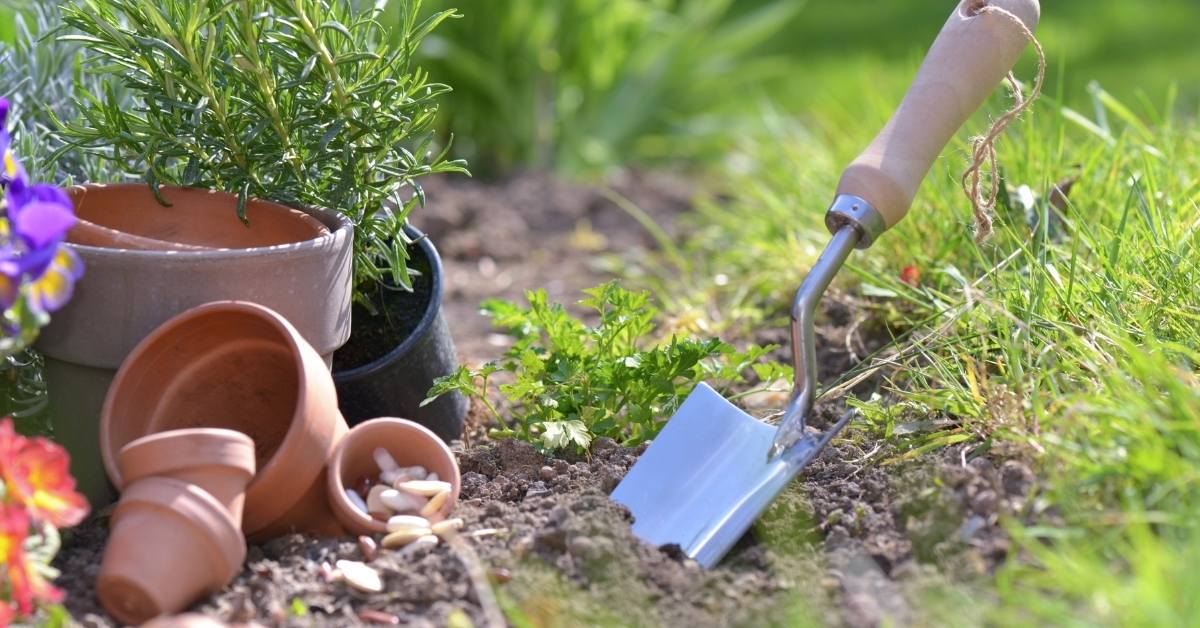The peace lily (Spathiphyllum), often known as the closet plant, is a common option for homes and businesses. The reasons why people like this plant should be clear. Excellent for beginners since it requires little maintenance and has straightforward care guidelines.
It will also aid in purifying the nearby air of various toxins. Even though caring for peace lilies is simple, ideal growing conditions are still crucial. Let’s examine how to care for peace lily indoors.
The peace lily is known by many as a “Peaceful Lily,” and, perhaps unexpectedly, it is also used often in the funeral industry as a plant. People attach a great deal of emotional significance to them, therefore it is important that you take the time to read our care advice below to learn how to maintain yours growing to its full potential.
How To Care For Peace Lily Indoors (Spathiphyllum)

Origin
Spathiphyllum, often known as the Peace Lily Plant, was originally introduced to Europe in 1824 when Gustav Wallis found it growing in the forest of Colombia. For his finding, Wallis is credited with giving the Peace Lily its Latin name, S. Wallis.
It is a relatively inexpensive plant to purchase, and due to its persistent popularity, it can be found in practically all stores that offer houseplants. In fact, we’d go so far as to say that it’s probably among the top five most often used houseplants.
Worth knowing about Peace Lily
| Botanical name: | Spathiphyllum |
| Other names: | Mauna Loa Peace Lily, Peace Lily, Spathe Flower, White Sails, |
| Use: | Houseplant, interior greening, office plant, room climate plant, feel-good plant, trend plant |
| Origin: | Amazon |
| Blossom: | The actual flower is the white bulb. This is surrounded by white bracts. The bract has a long shelf life. |
| Leaves: | Dark green, glossy |
| Particularities: | The potted plant impresses with its long flowering period, which is also suitable for people without a green thumb. Decorative even without inflorescence. Filters pollutants from the air. A bright location without direct sun is best. Often brown leaf tips in dry room air. With proper care, Spathiphyllum can grow old. |
Where should I place a peace lily in my house?
Choosing the right location in your house is an essential part of Peace Lilies care. Spathiphyllum prefers a bright spot in the room without direct sun.
The houseplant is susceptible to too much direct sunlight. Intense irradiation leads to brown leaves. In dark locations, there is less growth, the leaves turn darker, and the formation of flowers is reduced.
With plant lamps, dark corners can be improved as a location for the arum plant. Temperatures of 64 – 72 °F (18 to 22 °C) are ideal, and if possible, not below 59 °F (15 °C) at night.
From the end of May, the plant can be placed outside in a semi-shady place that is protected from rain. In the garden, the spot for the plant can also be shady.
Gradual acclimatization to outdoor conditions is important; otherwise, the dark green leaves will suffer burns. With us, you can buy these plants online. Just have a look at our online plant shop.
PRO gardening tip: If you want to get your Spathiphyllum to flower again, it is crucial that you reduce watering a little over a period of 4 to 6 weeks during the winter months. This kind of resting phase stimulates the tropical plant to flower.
How do I care for my Spathiphyllum indoors?

Peace Lilies care is easy and requires little time and knowledge. An even supply of water is essential for the elegant houseplant. In addition, fertilization is carried out from May to October. A repotting can take place every 1 to 2 years in spring. Leaves that are too large, brown, or unsightly are removed regularly. After flowering, you can cut off the faded stalk. Use a knife that is as sharp as possible and ensure a smooth cut.
What is the best way to water my Peace Lilies?
Proper watering affects single-leaf care. Depending on the location, pot size, substrate, and temperature, watering once or twice a week may be necessary. There must never be remaining water left, as it will result in brown leaves.
Let the top layer of soil dry out a bit before the next watering. It is also possible to submerge the plants. This has the advantage that the entire root ball is evenly moist, and the flowering houseplant is optimally cared for. To do this, place the whole pot in a water-filled bucket. Wait until no more air bubbles rise. Small plants can be showered with lukewarm water (98 and 105 F) once or twice a year.
If the plants are too big and unwieldy for this, wiping the dark green leaves with a damp cloth will help. This will remove the dust and help it develop well. Regular spraying with a bottle of lime-free water is also helpful in increasing the humidity. The easy-care houseplant thanks it with lush growth and a rich number of flowers.
PRO gardening tip: 60 to 75% humidity is beneficial for all Spathiphyllum. With the room temperature, the almost tropical conditions are the best for the plant. Brown leaf tips are usually an indication of direct sunlight or insufficient humidity. The plant is also suitable for bathrooms with high humidity and tropical climates.
How do I fertilize my Peace Lily?
Spathiphyllum needs regular fertilizer to grow and form new flowers. Fertilize the Peace Lilies every two weeks from April to September with flowering plant fertilizer. Fertilization with liquid fertilizer, which is mixed with the irrigation water, is optimal.
Spathiphyllum needs sufficient nutrients for the formation of flowers and lush green leaves. In the absence of fertilizer, the foliage is light yellow and small. The plants are not as vigorous and susceptible to pests. Fertilize every 4 to 6 weeks in autumn and winter.
Fertilizing with fertilizer sticks is easy to handle. With this convenient long-term fertilization, your houseplant is supplied with all the necessary nutrients, minerals, and trace elements for 3 months.
PRO gardening tip: If the leaves are yellow, there is usually a lack of fertilizer. We recommend regular fertilizer or repotting in a fresh substrate.
How do I report my Spathiphyllum?
The Peace Lilies is an uncomplicated plant, but it is vital to ensure that sufficient and good quality potting soil is available. Over time, the roots are so lush that care becomes more complex and transplanting is necessary. Repotting creates the best conditions for growth and flowering. You can quickly see new leaves on the plant.
Every year in spring, give your single sheet of new soil and transplant the houseplant into a larger pot. The Peace Lilies prefer a pH value of 5. It is important that you use high-quality potting soil for repotting, preferably structurally stable green plant soil.
PRO gardening tip: By repotting, you improve the conditions for the Peace Lilies. The existing root ball can be easily loosened with your hands and potted into high-quality soil. After transplanting, make sure you supply the plant with the most important nutrients for a few weeks. Maintenance is more straightforward because more moisture can be stored. Repotting is like wellness for the flowering houseplant.
Peace lily propagation
There are no leaf or stem cuttings for peace lilies, however, the division is a simple method of propagation. Although these plants may be propagated from seeds by an expert gardener, it will take many years for those starting in this manner to blossom. Learn how to reproduce your peace lily in the following sections:
- The first step is to get a clean pot with a maximum diameter of 6 inches and fill it with new potting soil.
- Remove the mother plant from its container and gently remove the dirt around its roots. Roots may be ripped if they are pulled too rapidly, which can affect their growth when they are reproduced. To find a cluster of roots with numerous leaves, gently peel apart the roots with your fingers.
- Using a clean, sharp gardening blade, remove any roots that link the leafy part to the mother plant. You may be able to cut more than one clump from the mother plant, depending on its size.
- Repot the mother plant and replant the new peace lily in the container.
- In order for the plant to adapt to its new container, it has to be kept in a warm, bright, and indirect light environment. Until the plant is well-established, keep the soil moist but not soggy. Maintain your normal routine for caring for the new plant.
What pests and diseases can Spathiphyllum get?
Spathiphyllum are robust plants that are hardly attacked by pests in the optimal location. With good care, damage to the roots or leaves is rarely present. The following problems can occur:
Spider mites

The affected leaves have silvery spots on the upper side, and webs are visible on the underside of the leaves. Spider mites appear especially in warm, dry weather. It is usually sufficient to rinse off the Peace Lilies with water and treat it with a plant strengthened.
These bio-active agents contain natural plant extracts that contribute to the revitalization of houseplants. See the Plant Doctor section for more information.
FAQ – The Peace Lilies
How can Spathiphyllum be propagated?
The simplest method of propagation is division. In spring, remove the plant from the pot and carefully pull it apart. It is important that there are sufficiently thick roots on each piece.
Then pot the new plants in small pots with a suitable soil mix. Sparing watering is important in the first few weeks after propagation. A grow house/greenhouse or a cover over the vessel is suitable to achieve high humidity.
Is Spathiphyllum poisonous for children and pets?
It’s thought that the peace lily plant has a very low toxicity level. The plant has poisonous oxalic acid and elements irritating mucosal membranes in all regions. The flower should not be eaten and should be kept out of the reach of children and animals.
How does the single sheet affect the indoor climate?
Spathiphyllum serves as a natural air purifier. It filters pollutants from the air and ensures a pleasant indoor climate.
It is, therefore, a popular houseplant and ideal for offices, bathrooms, kitchens, and much more.
Is Spathiphyllum also suitable for hydroponics?
A member of the Araceae family, it is easy to plant and care for in hydroponics. Especially in combination with stylish containers, the green leaves are a pleasure to have in the office or home for a long time.
What is the difference between a peace lily and a Spathiphyllum?
About 40 species of flowering plants belong to the Spathiphyllum genus, which is often known as the ‘Peace Lily.’ Plants known as “Peace Lilies” are usually cultivated indoors as houseplants. Although it may reach a height of 6 feet, it is more likely to grow to a height of 3 feet when kept inside.
Where should I place a peace lily in my house?
For indoor use, peace lilies like indirect light and shade. In fact, they’ve been found to thrive in workplaces with just fluorescent lighting and no natural light at all. A window facing south or west is ideal for peace lilies because it provides just the proper amount of light for them to thrive.
Can I put a peace lily in my bedroom?
Yes. Peace lilies are another of the most eye-catching plants in the bedroom. Many dangerous pollutants may be filtered out by placing them on your windowsill. These houseplants produce a lot of moisture, which raises the room’s humidity level and reduces airborne microorganisms that might cause allergies.
What is the lifespan of a peace lily?
Peace lilies live on average from three to five years, depending on how you care for them.
How often does a peace lily bloom?
When the plants are healthy, peace lily flowers will bloom twice a year, once in the spring and again in the autumn. The blooms may often be enjoyed for up to two months before they begin to turn brown.
How big do Spathiphyllum get?
Peace lily plant will eventually reach a height of around 2 to 3 feet in its mature state. On stems ranging from 10 to 12 inches in length, its leaves have a shiny lance form that is 9 inches long and 5 inches broad. The length of the flower stalk may range anywhere between 15 and 20 inches, while the blossoms themselves can be up to 4 inches broad.
Which window is best for peace lily?
Because peace lilies thrive in shadow, you should place your plant in a room that has windows that face either the north or the west; however, you shouldn’t position it directly next to the window. Increase the amount of light in the room if the leaves begin to turn yellow. If the leaves begin to turn brown, move the container farther away from the window.
How do I get my Peace Lily to bloom again?
If you give your spathiphyllum the proper care, you can count on it to produce numerous blossoms each year. When we say numerous, we are really referring to a significant number of items, such as one to three flowers at any one moment.
Can Peace Lilies be Grown in Water?
Yes. They can grow in water, and this is why they are often offered in vases with no soil. To keep the plant’s roots above the water level, you may either use a specially-designed vase insert or a layer of tiny river stones. In this way, the plant’s base and leaves remain dry, preventing rot by allowing the roots to develop deeper into the water.


